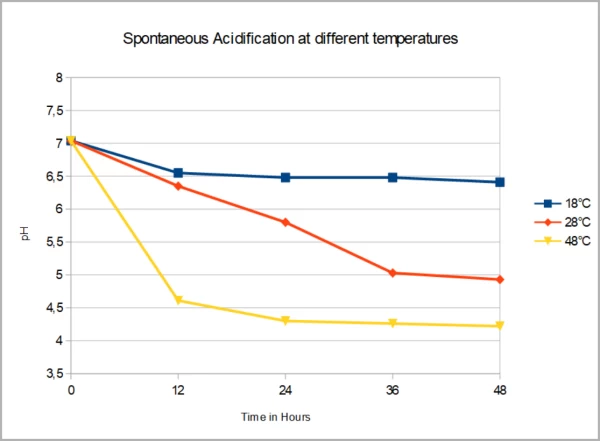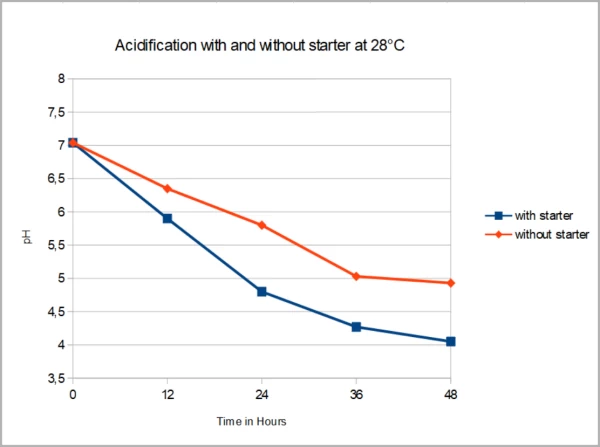Do I have to acidify the substrate?
Acidification of the substrate is a crucial step in the process of making tempeh. It helps create a suitable environment for the growth of Rhizopus molds and prevents the proliferation of unwanted bacteria. The acidification process involves adding acids (such as vinegar or lactic acid) during the boiling process or letting the beans acidify in the soaking water through natural lactic acid fermentation. This acidification results in a reduction of the pH level, where the lower the pH, the higher the acidity.
On social media, you can find many reports from tempeh makers who proudly claim that they produce tempeh without acidifying the substrate. While this is acceptable for personal consumption, it carries the risk of food poisoning. During the first 8 hours of fermentation, when the mold has not yet covered the substrate, any introduced bacteria can multiply rapidly if the substrate is not adequately acidified. These bacteria include Salmonella, Bacillus cereus, or other pathogens.
Spontaneous acidification
Many tempeh makers don’t add acids and rely on spontaneous acidification during the soaking process. Some claim that the soaking water is acidified when they observe foam forming on the surface, but this foam can be produced by yeast or bacteria that do not produce acids and do not lower the pH. We conducted a test on spontaneous acidification of soybeans under very clean conditions. We soaked 250 g of soybeans in 750 g of tap water, incubated at three different temperatures: 18°C, 28°C, and 48°C.

Soaking at 18°C did not result in a significant drop in pH, even after 48 hours of soaking. Unfortunately, at 28°C, the pH did not drop below 5.00, and after 36 hours, the water became very slimy. Fortunately, soaking at 48°C resulted in the desired pH drop to 4.30 after just 24 hours. But why do Indonesian traditional tempeh makers succeed in acidifying their beans with spontaneous fermentation? The reason is that they work in an unclean environment. While this may sound counterintuitive, some contamination from a previous batch is advantageous for a successful lactic acid fermentation.
Acidification with starter
For a successful lactic acid fermentation in the soak water, it is important to use an inoculum to start the fermentation. In our experiment, we added a small quantity of sourdough (0.1%) to the soaking water as an inoculum. As seen in the graph below, this starter significantly accelerated the acidification process.

After 24 hours, the pH dropped to 4.80, and a final pH of 4.05 was achieved after 48 hours. In this case, a final pH of 4.05 is actually over-acidified; ideally, the pH should be around 4.40. Experimentation with optimal soaking time and temperature is recommended to achieve the best conditions.
Legislation
There are no legal norms regarding the acidification of substrates for the production of tempeh. Tempeh producers should ensure that their production process results in low counts of Bacillus cereus. The BC Centre for Disease Control (Canada) recommends that the soaking water should have a pH below 4.6. This will prevent Bacillus cereus and Staphylococcus aureus from growing during the stage when beans are soaked. These two microorganisms produce heat-stable toxins that are not destroyed by a cooking step.